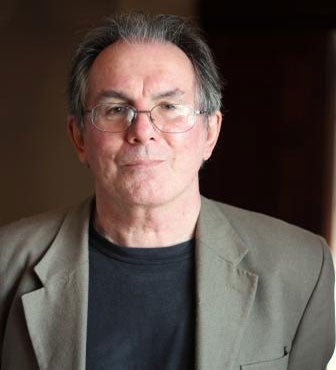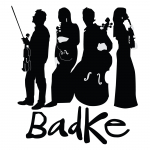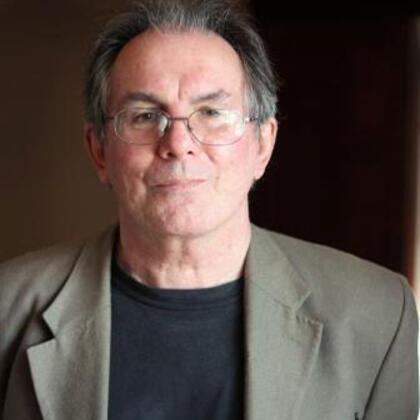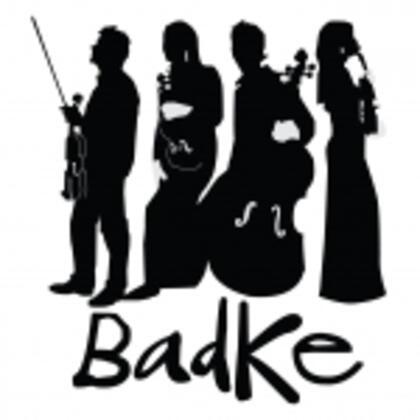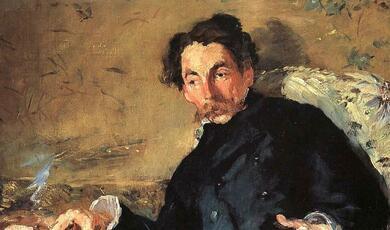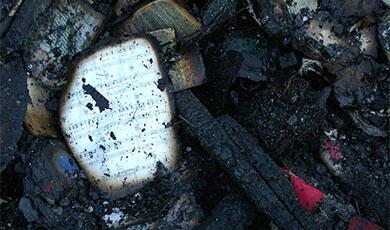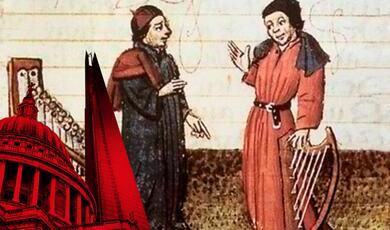Mozart - Quartet in C major, K465 (Dissonance)
Share
- Details
- Transcript
- Audio
- Downloads
- Extra Reading
One of six lectures devoted to a major work in the string repertory. Each will end with a complete live performance of the work by the Badke Quartet. The lectures will discuss both the historical and musical background of the work in question, and examine any particular performance problems that it raises.
The Badke Quartet, formed in 2002, is widely recognised as one of Britain's finest young string quartets. Recipients of the Leverhulme Junior Chamber Music Fellowship at the Royal College of Music from 2003-2005, and the Bulldog Scholarship for String Quartet at Trinity College of Music in 2006, the Badke Quartet has received widespread acclaim for its energetic and vibrant performances.
Download Transcript
Mozart - Quartet in C major, K465 (Dissonance)
Professor Roger Parker
My six Gresham lectures this year are each dedicated to a string quartet, the earliest (by Joseph Haydn) written in the 1770s, the latest (by Bela Bartók) written a little less than a hundred years ago. That's a period of nearly 150 years, and it could have been longer. Although Haydn's works are close to the start of the genre, so much so that he is sometimes even called its 'father', composers today are still writing them, often regarding them as compositions of great seriousness. Why has this particular combination of instruments lasted for so long?
It's not, after all, a particularly balanced group. Two violins, one viola (which is tuned a fifth lower), and one cello (which is an octave below that). We hear all sorts of quasi mystical stuff about the famed 'balance' and 'equality' of the group, but in fact the differences between the instruments make the ensemble in some ways extremely problematic. A viola is bigger than a violin, which makes it louder, but also harder to play in tune, particularly when the playing is fast. And the cello is so much larger still that the distances the left hand has to traverse necessitate a radically different fingering system. All this means that music played on one instrument will not always transfer easily to another. To take only the most obvious example: a rapid melody that may be a walk in the park for the violins can become a steep mountain path for the viola; for the cello, an oxygen mask and advanced climbing gear may be needed.
This imbalance in the ensemble derives from its origins, which were in early eighteenth-century orchestral groups. The two violins there tended to function in what's called a 'trio-sonata' texture, weaving in and out of each other's line, frequently overlapping; and the viola and cello tended to supply little more than the functional bass part. No equality here (apart from in the two upper instruments). But if the string quartet started life as a kind of minimal orchestra, for performances in smaller venues, many of them domestic, it soon took on a life of its own, becoming the most common chamber music ensemble of the later eighteenth century, first in Germany and Austria, then spreading, with the spread of its repertoire, to other European countries.
By the end of the eighteenth century, the string quartet's prestige had become considerable, in large part because two of the most famous composers of the period, first Haydn and then Mozart, had dedicated some of their most complex music to the genre. Beethoven simply added to this prestige, and after him there was no looking back. Although the comparatively restricted and uniform sound of four solo strings might have seemed thin indeed for musicians of the nineteenth century, let along for those of the twentieth, composers kept measuring themselves against the accumulation of masterpieces of the past. And so the string quartet has become a major repository for a certain kind of classical music; we might even say that it represents a particular attitude to what is central to our musical past. This is important, and not to be underestimated. The 'rise' of the string quartet more-or-less came with the rise of Austro-German instrumental music generally, and its prestige was locked into the idea that that particular tradition was central to our musical universe: was the one against which all others should be measured. This is why all those composers of the nineteenth and twentieth centuries - by no means all of them Austro-German - wanted to write string quartets, even at a time when many other combinations would have seemed more suited to the times. They wanted to measure themselves again the centre. But now? Do we still feel that centrifugal force from Austro-Germany? It will be a question worth considering from time to time during the lectures that follow.
As you will all know, a major feature of these lectures is that they will not be solo efforts on my part. In each case, my contribution is, in a sense, just a prelude, because each lecture will be completed by a live performance of the work in question. The idea that this was how it should be came to me very early, and was fundamentally influenced by the surroundings of a Gresham lecture. There is, of course, this ancient hall in which we are attending each other - older by far than any of the quartets, undoubtedly imposing, yet also somehow intimate and gently resonant. But there is also the fact that the venue and the lecture make us not a simple concert audience, but something more like a society. String quartets, at least most of them, are not ideally consumed in large concert halls, places in which strangers congregate. As we shall learn, the communication between the performers of a quartet is as subtle and intimate as any in music; and some of this sense of intense conversation needs, ideally, to spread also to the audience. I hope, then, that the fact that these performances will be surrounded by discussion, that words about the music and the performance will flow between the stage and the audience, will encourage and aid this vital communication.
I did, though, give a great deal of thought to precisely how words and music might combine. Neither should be a servant to the other, and for this reason I was reluctant to 'use' live music for illustrative, still less analytical purposes. On the other hand, using the gaps between movements for further discussion seemed, in certain cases, useful and legitimate. One hears a lot of pious talk uttered these days about the disastrous effects of the least interruption to multi-movement works: talk about concentration broken and coherence lost, etc., etc. Don't be taken in by it. There's hardly any historical justification for such feats of continuous listening (the idea of hearing four movements in solemn silence would have been bizarre to eighteenth-century audiences); what is more, and while there are certainly connecting threads between the movements of most quartets, there are also important differences between movements, and thus ways in which we can usefully refresh ourselves and our concentration when one movement stops and another begins. So, from time to time, although not today, a performance may be punctuated by further commentary.
Let's move now to the work that concerns us this week, Mozart's so-called 'Dissonance' quartet, written in the mid-1780s, when he was at the height of his short-lived career in Vienna and only five or so years before his untimely death. This date might seem to take us back nearly to the origins of the genre, but in fact a great deal of ground had been covered in the short time since string quartets had emerged at about the middle of the century. Mozart himself had written more than a dozen youthful quartets before the set of six to which the 'Dissonance' belongs, ones typical of the earliest examples in the genre. From our perspective today, they seem peculiarly divided in style. On the one hand, most movements are dominated by a very simple texture, with a clear melody line in the first violin and a clear bass in the cello, and with the inner two parts involved in functional accompaniment figures. This was the modern style of the time: a radical simplicity of effect when compared to the music of Bach and his contemporaries a generation earlier. On the other hand, though, certain movements are in the form of elaborate, Bach-like fugues, with absolute equality between all four instruments. As I said, this mixture sounds strange to us, a clashing of the old and the new, but it was not necessarily so at the time, when (after all) fugal writing persisted in certain musical genres (notably religious ones) all the way through the eighteenth and even the nineteenth centuries.
However, the set of six quartets that Mozart wrote in the first half of the 1780s, to which the 'Dissonance' belongs, is very different, and the differences come precisely in the absence of that clear division between 'old-style' counterpoint and 'new-style' melody and accompaniment. The string quartet, at least in the hands of Mozart, found a new balance, one sometimes associated the very ideals of the Enlightenment. It is as if the elements of old-style fugal writing, with its strict independence of the voices, has somehow been combined with the new-style, melody-and-bass simplicity, in a 'modern' texture which has obvious elements of melody and accompaniment, but which constantly injects into this a sense of independence among the parts. No single instrument accompanies for very long: each of them plays an essential part in both the melodic development and its accompaniment. People near the time gave this new, more complex texture a severe-sounding German name; they called itthematische Arbeit, thematic working - all elements of the ensemble are independent (and individual), but each works with the others to produce the total effect.
How did this revolution come about? Mozart gives as a broad hint in his dedication to the published version of the six quartets, which came out in 1785. He said that the quartets had been 'the fruit of a long and laborious endeavour' (and this much can be borne out by a glance at his autograph score, which sits less than a mile away from here in the British Library, and is full of evidence of second thoughts and improvements). And he dedicated them to 'a very celebrated Man' who is 'at the same time his best Friend'. The man was none other than Joseph Haydn, and there's plenty of evidence that Haydn's recent collections of quartets, in particular his Op. 33, were part of the inspiration for this new burst ofthematische Arbeit that Mozart indulged in these quartets. I say 'part of' because these musical developments weren't merely being passed between two great men: a gathering complexity of musical language, a rebelling against the simple melody-and-bass regime, was being felt in many genres, and in the work of many composers.
But Mozart, to the consternation of many at the time, undoubtedly went further in these quartets than anyone had before. Each of them seems consciously to explore new ground; the sense of experimentation, the 'long and laborious endeavour', is evident throughout the set. As it happens, though, the most radical of all is probably the 'Dissonance' quartet. Like all these six works, It's divided into four movements; an opening Allegro in sonata form, a slow movement, a Minuet and Trio and then a Finale. Its individuality is not, though, in manipulations of these outer forms (which are quite conventional), but in the inner workings of the movements: in the intricate way the instrumentalists interact with each other, and, in particular, the way in which Mozart enriches this inner working by constantly injecting into the harmonic vocabulary surprising twists and turns. The quartet is in the key of C Major, but this sunny, 'open' tonality is constantly interrupted by the intrusion of new, startlingly different harmonic colours (we call it, technically, 'chromaticism'), injections of complexity that trouble the surface.
This basic character is explored, in the most radical of ways, in the slow introduction to the first movement, which is one of the most surprising passages in all Mozart. Ostensibly, like all such slow introductions, it is meant to prepare us for the Allegro to come; but the sheer level of dissonance that builds up as the instruments enter one by one caused more than one commentator to suggest that the text Mozart left must have contained errors that needed correcting. Modern commentators have put minds at rest on this point, explaining how the winding chromatic lines of the instruments do all, eventually, make grammatical sense. But that risks blunting the sheer mysteriousness of this slow introduction, which 'incidentally' presents just the first of many formidable challenges to the performers. How is one supposed to interpret this introduction? The heavy tread of the cello's repeated notes, the gradual pile-up of dissonant notes as the instruments enter one after the other, that extreme dissonance in the first violin as it enters, the winding, meandering lines that then unfold: all this can be performed in a variety of ways, ones that can emphasise the harmonic difficulty, or attempt to gloss over it. The choice is there for the performers to make, and their decisions may influence in important ways the manner in which we hear the remainder of the quartet.
After this strange introduction, the first movement proper may come as a relief, although its repeated-note accompaniment is obviously related to the cello's repeated notes at the introduction's start, just as the opening first violin motif (which dominates the movement) is related in its contours and closing 'sigh' figure to the melodic ideas we have heard developing so tortuously just moments before. And as the movement progresses, you'll notice plenty of moments in which that troubled opening is briefly recalled, whether in the way that the instruments come in one after another, or in the way (particularly in the so-called 'second subject' area of the sonata form), in which a seemingly simple melody dissolves into wandering chromaticism. Notice also how, particularly towards the end of the movement, those repeated notes on the cello, which started the whole adventure, return insistently, as if to remind us of the trouble they caused.
The second moment is an Andante cantabile in F major, and starts in much simpler vein: with a clear melody in the first violin. But almost immediately, in the second phrase, you'll hear again that winding chromaticism in the inner parts, and also those tell-tale repeated notes in the cello. Soon after that, the moment become obsessively concerned with a small motive that is first passed from violin to cello, and then to the inner parts; and then, again, you will hear the characteristic build up of instruments, starting (as the slow introduction did) with the cello and moving upwards. In other words, it soon becomes clear that the slow introduction to this 'dissonance' quartet has actually been a kind a mine from which material for the rest of the movements are to be taken.
I can deal more briefly with the final two movements. The Minuet and Trio is, as always, the simplest in its outward form, but you'll nevertheless notice that those recurring elements still make an appearance. Indeed, even the violin's opening tag, much repeated by all the instruments, has an element of the slow introduction's chromaticism in it, an element that later gets developed quite extensively. And again you'll find examples of that 'staggered' entry of the instruments (this time starting with the first violin and moving down through the others). The trio is in a fiery and quite startling C minor, again with obvious links to the slow introduction in its motivic working. The final movement is certainly the least complicated in harmonic terms, although it again shows an occasional propensity to dive into a world of complex chromaticism. But its comparative simplicity on the harmonic level doesn't mean any sense of relaxation in terms ofthematische Arbeit: far from it. Listen carefully, and you'll notice a continual tendency to inject little moments of significant activity into all the instruments, with barely a bar going by in which the interaction between the four members of the quartet is stable.
How to sum up this remarkable quartet? In outer form, it is (as I said earlier) like a whole host of other pieces written during the period, both for string quartet and for many other ensembles. But internally it makes special demands, both on the performers and on the listener. As you attend to these four movements, you might like occasionally to experiment with some of the listening modes that are constantly opening before you: try, for example, to concentrate for a time on one of the inner parts, following the second violin or viola in the the constantly changing combinations in which they are involved: the way in which they join with the instruments above or below them, constantly making new patterns of accompaniment, or new motivic combinations. I mentioned at the start that this new quartet style, started by Haydn, and taking up, after 'long and laborious endeavour' by his young friend Wolfgang Amadé Mozart, aspired to an Enlightenment ideal. Four individual work together for the common good, always supporting each other, making a common message; but always retaining their sense of individuality. As well we know, in political terms this Enlightenment ideal, of the citizen and his social contract with the state, a contract ensuring protection both for him and his liberties, would forever be compromised; but briefly at least, it found artistic expression in the late eighteenth-century strung quartet; and for that, surely, we can be grateful.
It's time now for the performance, and thus time for me to introduce the Badke String Quartet, who will be playing all the pieces in these six lectures. It's an enormous pleasure for me to collaborate with the quartet, which was formed in 2002, and which is now widely recognised as one of Britain's finest young chamber ensembles. Recipients of the Leverhulme Junior Chamber Music Fellowship at the Royal Academy of Music from 2003 to 2005, and of the Bulldog Scholarship for String Quartet at Trinity College of Music in 2006, the Quartet regularly performs at festivals in the UK and abroad, including the Aldeburgh and Verbier Festivals, Belfast Festival at Queen's, Chichester Festivities and the London String Quartet Week. This season will see them perform in some of the UK's most prestigious chamber music venues, including the Wigmore Hall, St George's Bristol, St David's Hall, Cardiff, The Bridgewater Hall, St John's Smith Square and the Royal Festival Hall. In July of this year, the Badke were awarded First Prize and the Audience Prize at the Fifth Melbourne International Chamber Music Competition, which is probably the most prestigious international competition of its kind, and which had contestants from all over the world. So; please join me in welcoming the Badke Quartet: Heather Badke, first violin, Emma Parker, second violin, Matthew Jones, viola, and Jonathan Byers, cello.
BADKE QUARTET PLAYS MOZART'S
'DISSONANCE' QUARTET, K. 465
©Professor Roger Parker, Gresham College, 11 October 2007
Part of:
This event was on Wed, 10 Oct 2007
Support Gresham
Gresham College has offered an outstanding education to the public free of charge for over 400 years. Today, Gresham plays an important role in fostering a love of learning and a greater understanding of ourselves and the world around us. Your donation will help to widen our reach and to broaden our audience, allowing more people to benefit from a high-quality education from some of the brightest minds.


 Login
Login




